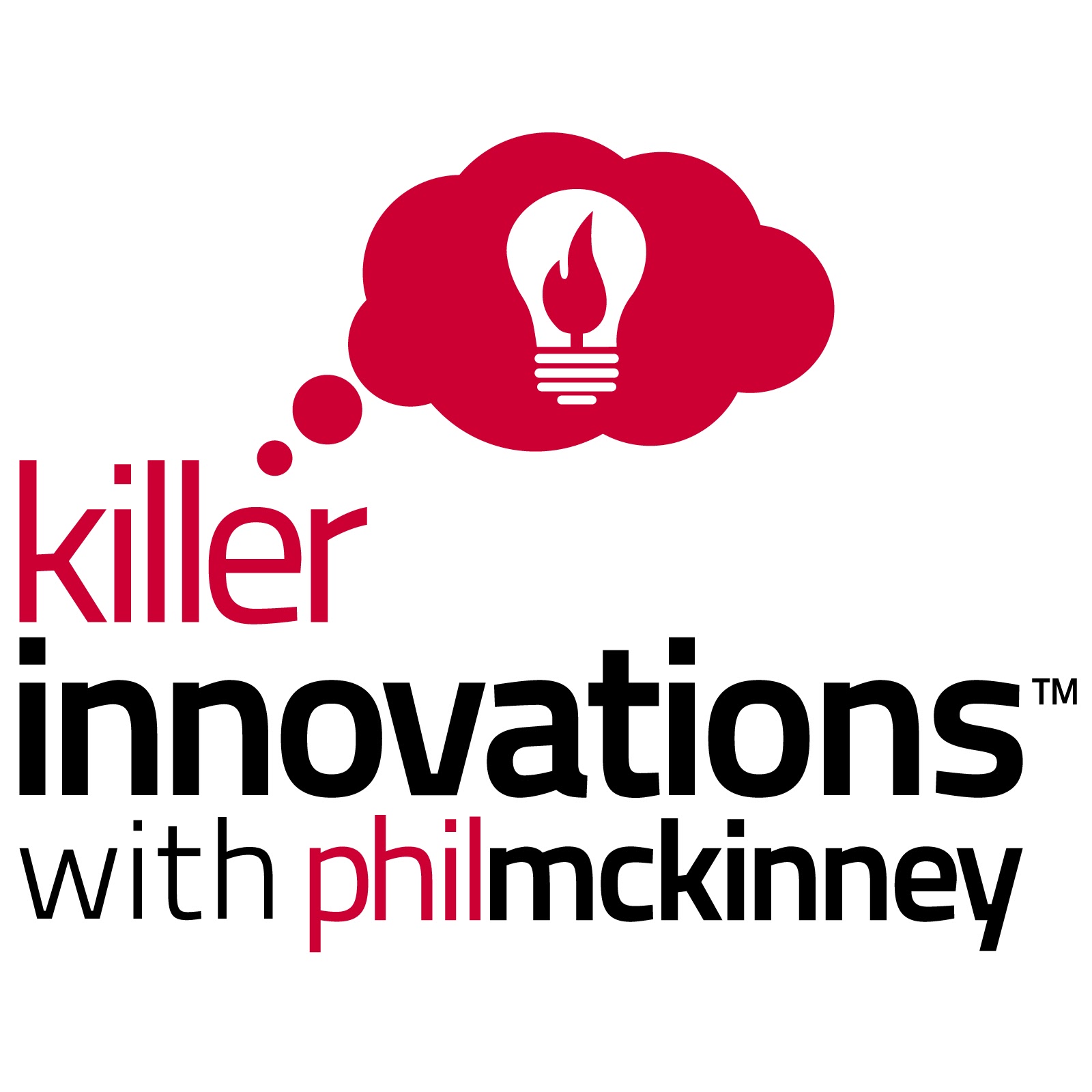
Thinking About Your Thinking Process – Metacognition

Killer Innovations with Phil McKinney - A Show About Ideas Creativity And Innovation
Shownotes Transcript
Have you ever stopped to think about how you think? It may sound odd at first, but this process, known as metacognition, is one of the most powerful tools we have for improving our mental abilities. Metacognition is the act of being aware of your thoughts and thinking patterns, helping you understand how you process information and fine-tune those processes to become more effective.
This article will explore advanced techniques for improving your metacognitive abilities and discuss why these skills are so important in your personal and professional life.
Why Metacognition Matters
Metacognition allows you to reflect on your thoughts, decisions, and actions. By being aware of how you think, you become better equipped to recognize mistakes and identify areas where your thinking may be limited. This self-awareness) allows you to adjust and improve your approach, resulting in better decision-making and problem-solving.
The significance of metacognition goes beyond just self-improvement. It also enhances your ability to process new information and adapt to changing circumstances. Mastering your thinking process can provide a competitive edge in a world filled with constant challenges. Regularly assessing your cognitive processes improves you at evaluating information, thinking critically, and making informed choices.
Advanced Techniques for Metacognitive Mastery
It’s important to go beyond basic self-reflection and apply more advanced strategies to harness the power of metacognition. Here are five techniques that can help you elevate your thinking skills:
1. Cognitive Reappraisal
Cognitive reappraisal involves consciously changing how you respond to challenging situations. By reframing your thoughts and emotions, you reduce stress and adopt a more reflective approach to problem-solving). This technique encourages you to recognize your mental habits and biases, making you more aware of your thinking patterns.
Steps to apply Cognitive Reappraisal:
Identify a challenging situation.
Reflect on your initial emotional response.
Reframe your perspective to improve your outcome.
2. Thought Experimentation
Inspired by great thinkers like Einstein), thought experimentation allows you to simulate different scenarios mentally. This practice strengthens your ability to anticipate consequences and make strategic decisions.
Steps to engage in Thought Experimentation:
Choose a decision or problem.
Visualize multiple outcomes.
Analyze potential solutions.
3. Metacognitive Journaling
Journaling with a metacognitive focus means regularly reviewing and analyzing your thoughts for patterns over time. This reflection sharpens your ability to regulate cognitive processes and make more informed choices.
Steps to practice Metacognitive Journaling:
Record your thoughts in a journal.
Regularly review entries to detect patterns.
4. Mind Mapping
Mind mapping helps organize information visually, promoting better comprehension and discovering new connections between ideas. This technique improves your ability to analyze and synthesize information.
5. Socratic Questioning
By deep questioning, you examine the foundations of your beliefs and assumptions. This approach fosters critical thinking and improves your capacity to analyze the validity of your thoughts.
Conclusion
Metacognition, or thinking about your thinking, can revolutionize how you approach challenges and opportunities. Adopting the abovementioned techniques allows you to master your cognitive processes) and improve your ability to think critically and solve problems effectively. Start applying metacognition in your daily life, and watch as your mental agility sharpens, leading to better outcomes in everything you do.
To learn more about metacognition, listen to this week's show: Thinking About Your Thinking Process – Metacognition).
.uf8d6d6e63e3a91e9dfc99cdf6d0c829f , .uf8d6d6e63e3a91e9dfc99cdf6d0c829f .postImageUrl , .uf8d6d6e63e3a91e9dfc99cdf6d0c829f .centered-text-area { min-height: 80px; position: relative; } .uf8d6d6e63e3a91e9dfc99cdf6d0c829f , .uf8d6d6e63e3a91e9dfc99cdf6d0c829f:hover , .uf8d6d6e63e3a91e9dfc99cdf6d0c829f:visited , .uf8d6d6e63e3a91e9dfc99cdf6d0c829f:active { border:0!important; } .uf8d6d6e63e3a91e9dfc99cdf6d0c829f .clearfix:after { content: ""; display: table; clear: both; } .uf8d6d6e63e3a91e9dfc99cdf6d0c829f { display: block; transition: background-color 250ms; webkit-transition: background-color 250ms; width: 100%; opacity: 1; transition: opacity 250ms; webkit-transition: opacity 250ms; background-color: #D35400; box-shadow: 0 1px 2px rgba(0, 0, 0, 0.17); -moz-box-shadow: 0 1px 2px rgba(0, 0, 0, 0.17); -o-box-shadow: 0 1px 2px rgba(0, 0, 0, 0.17); -webkit-box-shadow: 0 1px 2px rgba(0, 0, 0, 0.17); } .uf8d6d6e63e3a91e9dfc99cdf6d0c829f:active , .uf8d6d6e63e3a91e9dfc99cdf6d0c829f:hover { opacity: 1; transition: opacity 250ms; webkit-transition: opacity 250ms; background-color: #7F8C8D; } .uf8d6d6e63e3a91e9dfc99cdf6d0c829f .centered-text-area { width: 100%; position: relative; } .uf8d6d6e63e3a91e9dfc99cdf6d0c829f .ctaText { border-bottom: 0 solid #fff; color: #000000; font-size: 16px; font-weight: bold; margin: 0; padding: 0; text-decoration: underline; } .uf8d6d6e63e3a91e9dfc99cdf6d0c829f .postTitle { color: #FFFFFF; font-size: 16px; font-weight: 600; margin: 0; padding: 0; width: 100%; } .uf8d6d6e63e3a91e9dfc99cdf6d0c829f .ctaButton { background-color: #E67E22!important; color: #000000; border: none; border-radius: 3px; box-shadow: none; font-size: 14px; font-weight: bold; line-height: 26px; moz-border-radius: 3px; text-align: center; text-decoration: none; text-shadow: none; width: 80px; min-height: 80px; background: url(https://eadn-wc01-5964675.nxedge.io/wp-content/plugins/intelly-related-posts/assets/images/simple-arrow.png)no-repeat; position: absolute; right: 0; top: 0; } .uf8d6d6e63e3a91e9dfc99cdf6d0c829f:hover .ctaButton { background-color: #95A5A6!important; } .uf8d6d6e63e3a91e9dfc99cdf6d0c829f .centered-text { display: table; height: 80px; padding-left: 18px; top: 0; } .uf8d6d6e63e3a91e9dfc99cdf6d0c829f .uf8d6d6e63e3a91e9dfc99cdf6d0c829f-content { display: table-cell; margin: 0; padding: 0; padding-right: 108px; position: relative; vertical-align: middle; width: 100%; } .uf8d6d6e63e3a91e9dfc99cdf6d0c829f:after { content: ""; display: block; clear: both; } RELATED: Subscribe To The Killer Innovations Podcast)